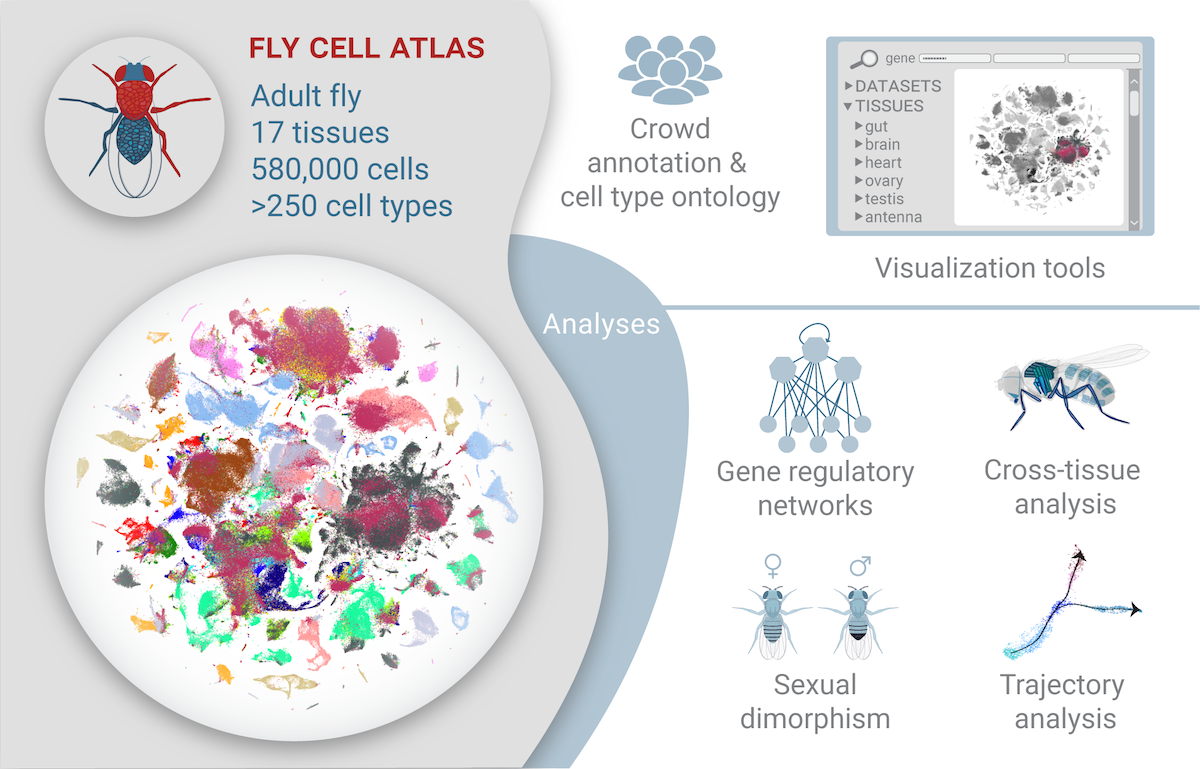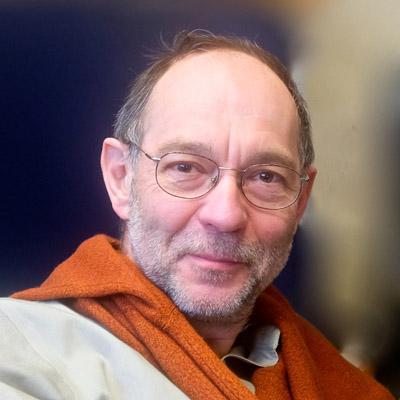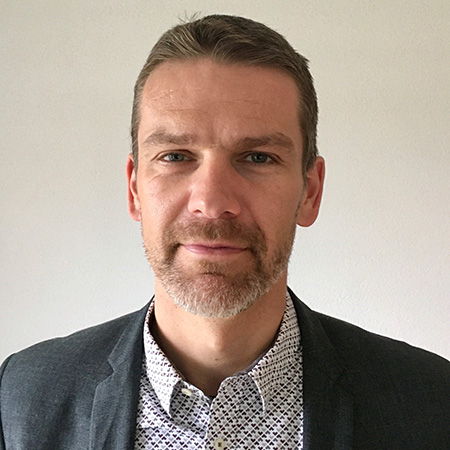The fruit fly: tiny research hero now fully mapped
A large international consortium creates the first complete atlas of all fly cells
March 3, 2022
.jpg)
The fruit fly: a small but powerful creature
Fruit flies have played a leading role in biological research for over a century, ever since Thomas Hunt Morgan used these tiny insects to discover that genes reside on chromosomes, essentially uncovering the mechanical basis of heredity. Many scientists followed in Morgan’s footsteps and several went on to win a Nobel Prize for their groundbreaking discoveries using this small model organism.
Aside from key insights into the basic workings of biological mechanisms such as genetics and developmental biology, fruit flies have played a vital role in developing treatments for cancer, immune disease, and diabetes, to name just a few. That is because fruit flies are more similar to humans than their appearance suggests. Of the approximately 14,000 protein-encoding genes in the fruit fly genome, about two-thirds have a human counterpart.
The single-cell revolution
With the advent of single-cell genomic technology, scientists have been able to study tissues at unprecedented resolution, looking at the expression of all genes simultaneously in thousands of individual cells. Such fine-grained insights can help to decipher how certain cells differ from and interact with their neighbors, and how they form and function in the tissue.
With the fruit fly as popular as ever in biomedical research – small in size, easy to breed – single-cell analysis has quickly gained traction in this research community.
“Several research groups across the globe, including my own, have recently applied single-cell sequencing to different fruit fly tissues at different developmental stages,” says Stein Aerts, group leader at VIB and KU Leuven in Belgium. “The problem is that these data have been generated by different laboratories on different genetic backgrounds with different protocols and sequencing platforms, which has hindered the systematic comparison of gene expression across cells and tissues.”
Stein Aerts is one of the founders of the Fly Cell Atlas consortium, which grew organically after gathering specialists in the fly research community to Leuven back in December 2017. What began as wild plans forged over Belgian beers has now become a reality: after four years, many meetings, and a lot of hard work, the consortium now presents the first complete Fly Cell Atlas in Science.
Teamwork makes the dream work
“This was really a titanic piece of work,” says Liqun Luo of Stanford University, who co-lead the endeavor together with Aerts, and three other leading figures in the field: Stephen Quake, at Stanford and the Chan Zuckerberg Biohub (CZ Biohub); Bart Deplancke at EPFL; and Norbert Perrimon at Harvard. “The entire consortium involved 158 experts from 40 different laboratories across the world and was supported both technically and financially by the CZ Biohub.”
Two early-career researchers on opposite sides of the Atlantic spearheaded the data generation and analyses: Jasper Janssens, a soon-to-graduate PhD student at VIB-KU Leuven, and Hongjie Li, assistant professor at Baylor College of Medicine and until recently postdoc in Luo’s lab at Stanford.
Hongjie Li says: “We aimed to establish a cell atlas for the entire adult fruit fly — with the same genetic background, dissociation protocol and sequencing platform. In this way, we’d be able to obtain a comprehensive categorization of cell types, integrating our single-cell transcriptome data with existing knowledge about gene expression and cell types, to systematically compare gene expression across the entire organism and between males and females. It would also allow us to identify cell type-specific markers across the entire organism.”
The team took two complementary strategies to achieve their goal, adds Jasper Janssens: “We sequenced genetic material from dissected tissues so we knew the identity of the tissue source, but we also sequenced genetic material from the entire head and body to ensure that all cells were sampled.”
The resulting dataset, named Tabula Drosophilae – for Drosophila melanogaster, the Latin name of the fruit fly – contains more than 580,000 cells, resulting in more than 250 distinct cell types. “Many of these cell types are characterized for the first time,” says Janssens.
In service to (human) medicine
“What is particularly inspiring”, says Bart Deplancke, “is how the fly community united over biological, technological, and computational borders to generate this huge dataset and study all the different cell types in great detail, yielding perhaps the most highly curated cell atlas to date”.
“Our Fly Cell Atlas will constitute a valuable resource for the research community as a reference for studies of gene function at single-cell resolution,” says Norbert Perrimon. “This will be helpful for anyone studying biological processes in flies but also for modeling human diseases at a whole-organism level with cell-type resolution.”
The consortium made all its data freely available online for further analysis through multiple portals or for custom analyses using other single-cell tools.
“I am so pleased that the CZ Biohub was able to contribute to this monumental community resource,” says Stephen Quake. “We are excited that whole-organism cell atlases are now reaching fruition for a number of important organisms and are being made available to scientists across the globe.”

Publication
Fly Cell Atlas: A single-nucleus transcriptomic atlas of the adult fruit fly
Li, Janssens, et al. Science 2022
.jpg)
.jpg)






